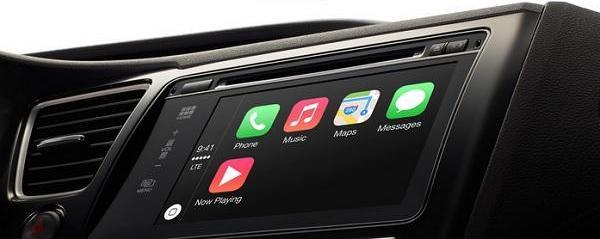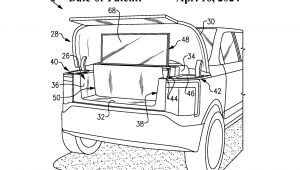Apple’s CarPlay Hits the Road

If you drive a Ferrari, Mercedes-Benz, or a Volvo, you might be in luck. Those car makers will be demonstrating CarPlay at the Geneva Auto Show, and rolling out compatible models as early as this year. Apple says it expects that models from Honda, Hyundai, and Jaguar will also arrive later this year. Down the road, look for BMW, Ford, GM, and Toyota; the only notable holdouts are Audi, Chrysler, and Volkswagen.
For now, unfortunately, you need to connect a Lightning cable to connect your iPhone to the CarPlay system; only Volvo will offer a WiFi connection. Hopefully other car makers will skip the cable, which is clearly an embarrassing workaround, and go straight to WiFi when they launch. CarPlay’s connectivity uses the H.264 video protocol. One open question—how long until we see mobile aftermarket products that support CarPlay?
As you would expect from Apple, CarPlay’s operation looks simple. Press a button on the steering wheel, then talk to Siri. She can read email to you, and let you dictate a reply. The touchscreen in your dashboard becomes an enormous iPhone display. Forget your outdated car GPS; your up-to-date phone handles all the connectivity and processing. In other words, your car’s proprietary system is irrelevant. (Whew! So far, car makers have been better at designing cars than pseudo smartphones.) Moreover, whereas some existing iPhone-compatible systems require third-party apps, CarPlay is 100% Apple. To get CarPlay, you’ll need an update to iOS7 (and a new car).
Vehicle integration is the latest, and developing, battlefield for Apple and Google. Both companies want to command the high ground that vehicle-based software and services can provide. To that end, Google has announced its Open Automotive Alliance that will allow car makers to bring Android integration to their vehicles. The first models are expected later this year as car makers anxiously want to bet on both horses and clearly, need vehicles that are compatible with both OSs.
Why does car infotainment matter? Several reasons. First, about 80 million cars and trucks are sold globally every year. That represents a tidy potential growth market for smartphone makers who face an increasingly saturated market in handsets. Second, without question, driverless vehicles are on the way. Once drivers can kick back and just enjoy the ride, the demand for high-end vehicle entertainment will skyrocket and smart companies will race to develop killer mobile entertainment technology; phone makers want to make sure they have a dog in that fight.
It took forever, but it looks like Apple and Google (and Microsoft?) will finally bring order to vehicle/phone integration, potentially sweeping away the proprietary systems. Expect a nice bump in convenience and features, and a quantum leap in mobile video and audio quality when driverless cars arrive.
























































